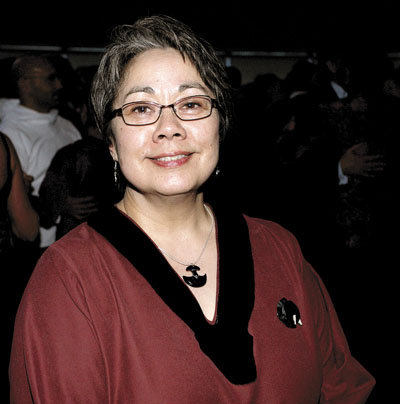More than one-fourth of Nunavut’s next MLAs are women
Nunavut has taken a small step toward achieving gender parity among members of the legislative assembly.
Of the 22 winners of the Oct. 30 territorial election, six — more than a quarter — are women.
That’s double the number of women elected to the last assembly, and marks the highest number of women elected to the legislature since Nunavut became a territory in 1999.
“That is a step in the right direction. I would have loved to see more, but I’m very delighted with the fact that there are more women than ever,” Eva Aariak, Nunavut’s first and only woman premier, told Nunatsiaq News on Oct. 31. “To have a balance is important.”

Here are the Nunavut women who won seats in the Oct. 30 territorial election:
• Pat Angnakak will return to the Iqaluit-Niaqunnguu seat, after a tough three-way race in her constituency.
• Cathy Towtongie defeated incumbent Tom Sammurtok in Rankin Inlet North-Chesterfield Inlet, with 171 votes, almost twice as many as Sammurtok’s 93. Towtongie was the first woman to serve president of Nunavut Tunngavik Inc.
• Elisapie Sheutiapik will represent Iqaluit-Sinaa after unseating incumbent Paul Okalik, a two-time Nunavut premier. Sheutiapik is a former Iqaluit mayor and president of the Qulliit Nunavut Status of Women Council.
• Margaret Nakasuk will become MLA for Pangnirtung after beating out incumbent Family Services Minister Johnny Mike. Nakasuk worked previously for the Government of Nunavut’s departments of Family Services and Education.
• In Cambridge Bay, hamlet mayor Jeannie Ehaloak finished just nine votes ahead of Pamela Gross, executive director of the Kitikmeot Heritage Society.
• In Kugluktuk, political newcomer Mila Adjukak Kamingoak, 31, won her seat by acclamation.
“In a balanced discussion, where an issue comes up that there are no easy answers to, a wholesome dialogue is very important so that all angles and aspects of the issue are addressed in terms of possible solutions,” Aariak said.
Diversity in the legislature helps broaden this kind of dialogue, she added. “Sometimes women have a slightly different perspective.”
However, the point of evening out the number of men and women leaders is mostly about opportunity and equality, she said.
“When I was in my position as the premier … I didn’t really, at the time, concentrate a whole lot about the fact that I was female,” she said. “But when it comes to discussions behind the scenes, it’s valuable to have that input.”
Aariak said she knows of many Nunavut women who would be strong candidates, but who haven’t yet chosen to run.
“I have a feeling I will see more [women run] in the future,” she said.
Pat Angnakak was one of three women elected in the last government, along with Monica Ell-Kanayuk and Jeannie Ugyuk—though Ugyuk resigned her Netsilik seat after failing a mid-term leadership review in 2015.
“I look forward to working with more women in the legislature,” said Angnakak, who will resume her Iqaluit-Niaqunnguu seat. “It’s balance … the more cross representation we can have, the better it’s going to be.”
“It’s going to be a very different legislature,” said Nancy Karetak-Lindell, a one-time member of parliament for the riding of Nunatsiaq, later renamed Nunavut, from 1997 to 2004 and the current Canadian chair of the Inuit Circumpolar Council.
She told Nunatsiaq News that greater gender balance in the legislature may lead to faster and more effective solutions for issues such as mental wellness and could, in turn, help the younger generation of Nunavut males.
“We need to really take a good look at the mental wellness of our population,” said Karetak-Lindell, of Arviat.
When she sees current graduation photos for Nunavut high schools and the Nunavut Sivuniksavut program, or hears about young Nunavummiut attending post-secondary school, she sees mostly girls.
“That worries me greatly,” said Karetak-Lindell, who is a mother of four sons.
“I’m hoping that with more women in the legislative assembly that we will take a look at those issues and find out, ‘Why are we not engaging young men to be part of productive society? What are the barriers facing these young men?’ I’m hoping that with this new assembly, those questions will be asked and answers will be demanded.”
Her advice to candidates was: “Know that you belong there … people voted for you to be there. You were elected by your constituents to represent them, so let that be your foundation.”
She also cautioned members to hire good staff, know their rights as individual members and try to be confident in the face of adversity.
“It is a thankless job to be an elected representative. You have to learn to take a lot of criticism, deal with difficult issues and make tough decisions that are not always supported.”